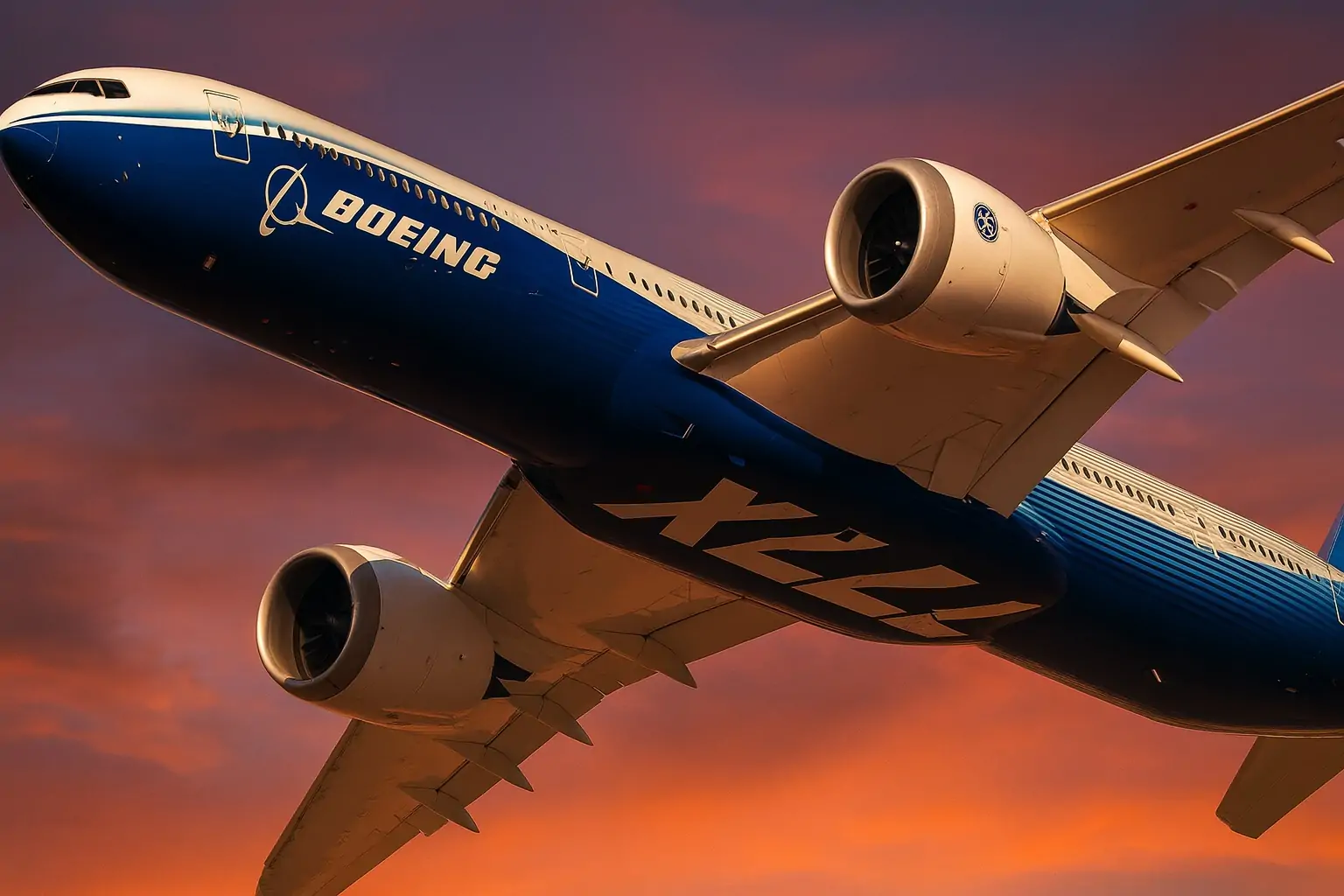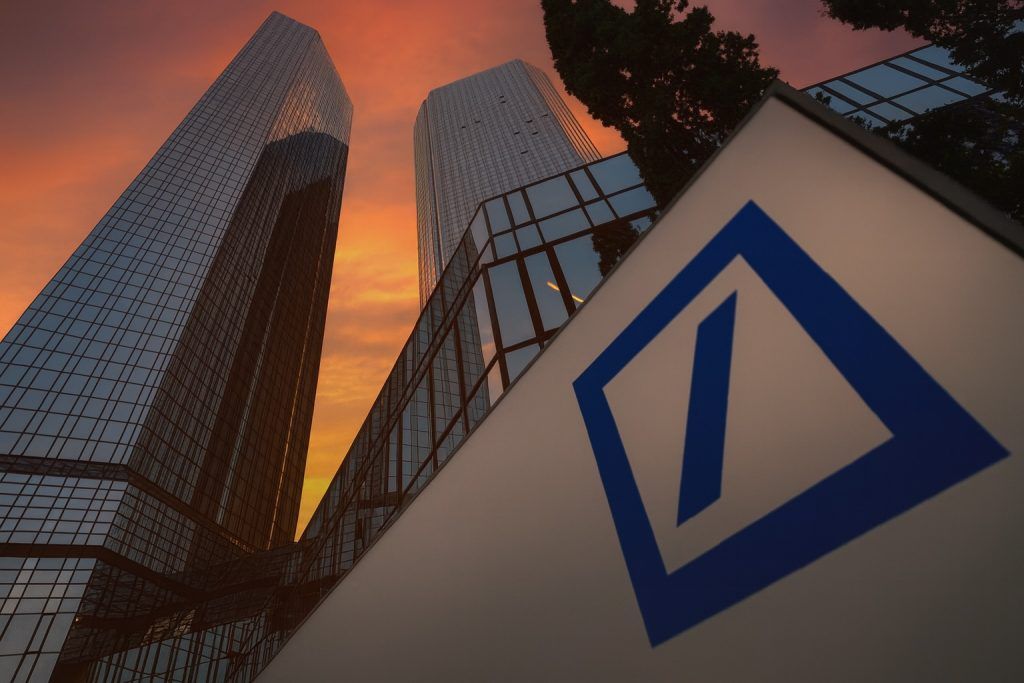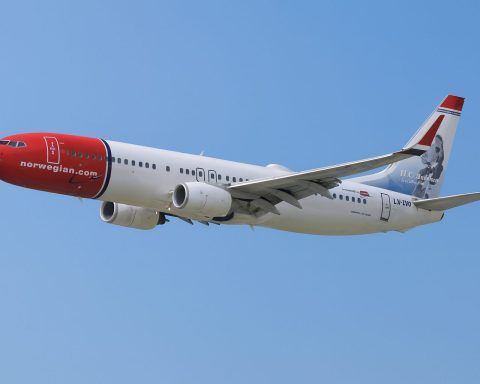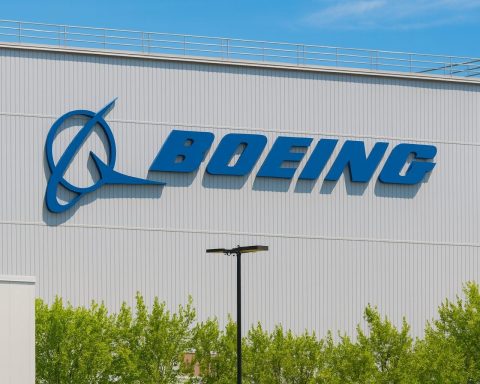Dubai, United Arab Emirates — November 17, 2025:
Emirates has stunned the opening day of Dubai Airshow 2025 with a new order for 65 Boeing 777‑9 aircraft, a deal valued at $38 billion at list prices and built around Boeing’s delayed but strategically crucial 777X program. The purchase lifts Emirates’ total 777X commitment to 270 aircraft and takes its overall Boeing widebody orderbook to 315 jets, including 777 freighters and 787 Dreamliners. [1]
The blockbuster deal is the latest twist in the story of Boeing’s next‑generation long‑haul flagship: a jet that has accumulated huge costs and multiple delays, yet continues to attract orders from airlines that need large, fuel‑efficient aircraft for global networks.
A mega-order on day one of Dubai Airshow 2025
The biennial Dubai Airshow opened with Emirates — the hometown carrier and the world’s largest international airline — taking center stage. The airline confirmed it is adding 65 more Boeing 777‑9s powered by GE9X engines, deepening its bet on high‑capacity twin‑engine jets as demand for long‑haul travel through Dubai surges. [2]
According to Emirates, the new commitment:
- Brings its total Boeing 777X orders to 270 aircraft
- Raises its Boeing widebody backlog to 315 jets (270 777Xs, 10 777 freighters, 35 787s)
- Extends scheduled Boeing deliveries out to 2038, effectively locking in a long-term widebody growth pipeline for the airline [3]
The deal was formally signed at the show by Emirates Chairman and CEO HH Sheikh Ahmed bin Saeed Al Maktoum and Boeing Commercial Airplanes President and CEO Stephanie Pope, underscoring a four‑decade partnership that has already made Emirates the world’s largest operator of the Boeing 777 family. [4]
Sheikh Ahmed framed the order as part of Dubai’s wider growth agenda, saying the new jets have been carefully mapped into Emirates’ expansion plans and will help the airline maintain a modern, high‑capacity fleet as it continues to post record traffic and profits through its Dubai hub. [5]
What exactly is Emirates buying?
65 Boeing 777‑9s
The agreement is for 65 additional 777‑9 passenger jets, the larger of the two passenger variants in the 777X family. That cements Emirates’ status as the largest 777X customer worldwide, by a considerable margin. [6]
The 777‑9 is designed to:
- Seat around 400+ passengers in typical long‑haul configurations
- Offer up to 426 seats in high‑density layouts, according to Boeing data [7]
- Replace older 777‑300ERs and, in Emirates’ view, cover some of the capacity gap left by the discontinued Airbus A380
Boeing markets the 777‑9 as the largest twin‑engine passenger jet ever built, with a wider cabin than the current 777 and a range suited to ultra‑long‑haul missions typical of Gulf super‑connector airlines. [8]
130 additional GE9X engines
The aircraft order is paired with a huge engine deal. Emirates has also signed for 130 additional GE9X engines, bringing its total GE9X orderbook to 540 units — making it by far the largest GE9X customer. [9]
The GE9X is the exclusive engine for the 777X and is one of the most advanced commercial turbofans ever built, featuring:
- A massive 132‑inch fan
- High bypass ratio and advanced materials
- Efficiency gains that support the aircraft’s promised fuel burn reductions [10]
Emirates’ management has repeatedly highlighted fleet commonality and fuel efficiency as core pillars of its strategy, and the 777‑9/GE9X combination is central to both.
A big vote of confidence in a troubled program
Boeing’s 777X has been on a rough ride.
Originally launched in 2013 with an eye toward entry into service around 2020, the program has since been hit by technical challenges, stricter regulatory scrutiny after the 737 MAX crises and supply‑chain disruptions. Today, Boeing expects first deliveries in 2027 — a delay of roughly seven years from its initial target. [11]
In late October, Boeing pushed back the 777X delivery timeline again and booked a $5 billion charge on the program, taking cumulative charges above $15 billion, according to company disclosures cited by Reuters. [12]
Separately, just days before the airshow, Boeing removed 33 777X orders from its official backlog, reclassifying them under stricter accounting rules for deals considered less certain. That move reduced the firm backlog to around 473 aircraft, even as total orders and commitments remain above 600 when softer categories are included. [13]
Against that backdrop, Emirates’ decision to increase its exposure to the 777X stands out as a powerful endorsement:
- It more than offsets the recent backlog reduction of 33 jets
- It confirms that some of Boeing’s most important widebody customers remain committed despite delays and cost overruns
- It signals that airlines with capacity‑constrained hubs still see a strong need for very large, long‑range twinjets in the 2030s
Analysts have framed the order as both commercially significant — in value and volume — and symbolically important, given lingering questions about the 777X schedule and the competitive pressure from Airbus’s A350 family. [14]
Backing Boeing’s proposed 777‑10 stretch
A key twist in the Emirates deal is what it says about future variants of the 777X.
Emirates has secured options to convert part of this new 777‑9 order into either the 777‑8 or a proposed 777‑10 — a yet‑to‑be‑launched stretched variant that would offer even more seats. [15]
According to Aviation Week reporting from the show:
- Emirates is openly encouraging Boeing to develop the 777‑10, which would push twin‑engine aircraft closer to A380‑like capacities
- The airline views larger, more efficient aircraft as essential to dealing with airport slot constraints and expected growth in global air travel
- Boeing executives say their current focus is on certifying and ramping the 777‑9 and 777‑8F, but acknowledge ongoing product‑development studies on additional variants [16]
Emirates has long been vocal about the need for a high‑capacity successor to the A380 and has also urged Airbus to examine a larger A350 stretch. With its vast A380 and 777 fleets, the airline is uniquely exposed to whatever comes next in the “big twin” category — and today’s order is a way of shaping that future.
Why Emirates still wants the 777X
Hub‑and‑spoke model needs big twins
Emirates’ network strategy is built on funnelling traffic through Dubai between Europe, Asia, Africa and the Americas. That model favors:
- High‑capacity aircraft to maximize scarce airport slots
- Long-range jets capable of linking distant city pairs non‑stop
- Cabin products that can justify premium fares over ultra‑long sectors
The airline’s current backbone is the Airbus A380 and the Boeing 777‑300ER, but A380 production has ended and many 777‑300ERs will age out over the next decade. The 777‑9 is intended to bridge that gap, offering near‑A380 capacity with the economics of a new‑generation twin‑engine design. [17]
Boeing claims the 777‑9 will cut fuel burn and emissions by around 20% versus the aircraft it replaces, helped by the GE9X, a new carbon‑composite wing and long, folding wingtips that allow for a huge span in the air while still fitting standard airport gates on the ground. [18]
Betting on long-term demand — and on Boeing
The order arrives just as Boeing argues that widebody demand in the Middle East will remain extremely strong. In its 2025 Commercial Market Outlook, the manufacturer forecasts that airlines in the region will need nearly 3,000 new widebody jets over the next 20 years, driven by hub carriers expanding long‑haul networks. [19]
Emirates’ deal both reflects and reinforces that view. The airline explicitly describes the purchase as a “massive” long‑term commitment to U.S. aerospace manufacturing, saying it expects the program to support hundreds of thousands of high‑value jobs over its lifetime — language clearly aimed at underlining the order’s economic and political impact in the United States. [20]
For GE Aerospace, the 130‑engine top‑up strengthens the GE9X’s position at the heart of the 777X program and locks in decades of high‑value aftermarket work on Emirates’ fleet. [21]
A welcome headline for Boeing investors — but work ahead
Financial markets have been watching the 777X program closely. Boeing’s late‑October charge and delay announcement raised fresh concerns about costs and the risk of further slippage, even as demand for widebody aircraft remains robust. [22]
Today’s Emirates order offers several positives for Boeing:
- It confirms strong demand from one of the world’s most influential widebody customers
- It partially offsets the 33 orders removed from the backlog under stricter accounting standards
- It underscores that airlines are still willing to commit to the 777X despite regulatory and technical headwinds
Coverage of the deal by MarketWatch and others notes that Boeing and GE Aerospace shares saw a modest uptick after news of the order and associated engine deal, reflecting investor relief that big customers remain on board. [23]
But the task ahead is still formidable. Boeing must:
- Complete an extensive certification program for the 777‑9 under a much tougher regulatory regime
- Manage supply‑chain and production ramp‑up risks
- Avoid further major charges on a program that has already absorbed over $15 billion in write‑downs [24]
Only once deliveries begin — currently targeted for 2027 — will Emirates and other launch customers start seeing the capacity and efficiency they have now bet billions of dollars on.
What this means for passengers and the industry
For travelers, Emirates’ expanded 777‑9 fleet promises:
- New cabins and refreshed interiors as the airline aligns its future product with A350s and retrofitted 777‑300ERs
- Potentially more non‑stop city pairs through Dubai as aircraft arrive through the 2030s
- A gradual shift away from the A380, with the 777‑9 taking over more trunk routes over time [25]
For the industry, the order sends three clear signals:
- Big twins are here to stay
Even with the end of four‑engine giants like the A380 and 747, airlines with slot‑constrained hubs still want very large aircraft — but they want them with twin‑engine economics. - Boeing’s 777X narrative isn’t finished
Despite delays, charges and backlog adjustments, marquee customers like Emirates are doubling down, giving the program breathing room as it moves toward certification. - The Boeing–Airbus widebody battle is intensifying
Emirates’ push for a 777‑10 and hints about a larger A350 stretch highlight a looming showdown at the top end of the market, where a handful of airlines will shape what long‑haul flying looks like for decades.
As the Dubai Airshow unfolds, Emirates’ 65‑jet order stands as the headline move of day one — part vote of confidence, part high‑stakes gamble — on a jet that has tested Boeing’s resilience but still promises to redefine long‑haul travel if it finally gets off the ground in 2027.
References
1. www.emirates.com, 2. www.emirates.com, 3. www.emirates.com, 4. boeing.mediaroom.com, 5. www.emirates.com, 6. boeing.mediaroom.com, 7. en.wikipedia.org, 8. boeing.mediaroom.com, 9. www.emirates.com, 10. en.wikipedia.org, 11. www.reuters.com, 12. www.reuters.com, 13. www.aeronewsjournal.com, 14. www.reuters.com, 15. www.emirates.com, 16. aviationweek.com, 17. www.emirates.com, 18. boeing.mediaroom.com, 19. boeing.mediaroom.com, 20. www.emirates.com, 21. www.emirates.com, 22. www.reuters.com, 23. www.marketwatch.com, 24. www.reuters.com, 25. www.emirates.com










